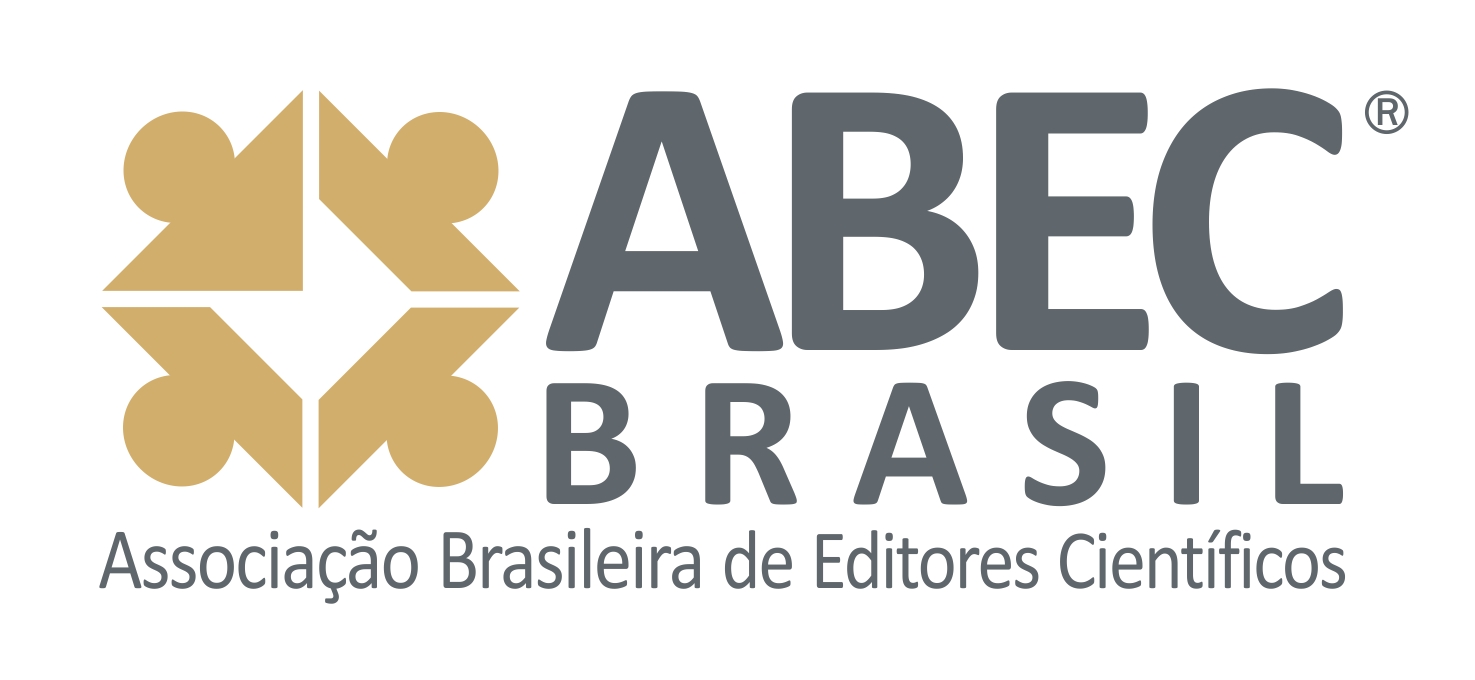SIMULATING OF FUTURE CLIMATE CONDITIONS ON THE EFFECT OF IRRIGATION ON SUGARCANE YIELD IN SOUTHERN BRAZIL
DOI:
https://doi.org/10.37856/bja.v96i2.4250Resumo
The objective of this study was to evaluate the technical and economic feasibility of installing central pivot irrigation systems in current days (Scenario A) and in two future scenarios, one with a 10% increase in rainfall (Scenario B1) and the other with 10% reduction in rainfall (Scenario B2). For both future scenarios, an increase of 2ºC in the global temperature and the concentration of atmospheric carbon dioxide (CO2) increasing to 528 ppm (parts per million) were considered. For the study, the recommendation for an area of clayey soil and with the sugarcane cycle was evaluated on three different planting dates: May 15, August 15 and November 15. The DSSAT/CANEGRO model was used, and under the current conditions, the simulations indicated greater yield for planting in May, both for rainfed and irrigated. For scenario B1, there was an increase in yield of 22% for rainfed and 33% for irrigated. In addition, irrigation provided yield gains in the two future scenarios of 13% and 14% for B1 and B2, respectively. Based on the results obtained, central pivot irrigation proved economically viable in the simulated climatic conditions. Therefore, the increase in sugarcane production provided by irrigation in agronomic management was sufficient to make investment in the region in question feasible. It is suggested to repeat the study in other regions, since the existing synergy between the factors that define agricultural yield can change the decision making about the implantation of irrigation systems in the production environment.Referências
AGUIRRE, L. A. 2000. Introdução à Identificação de Sistemas - Técnicas Lineares e Não-Lineares Aplicadas a Sistemas Reais. [S.l.]: Editora UFMG.
ALLEN, L. H.; JONES, P. H.; JONES, J. W. 1985. Rising atmospheric CO2 and evapotranspiration. Advances in evapotranspiration. St. Joseph: ASAE,. P. 13-27.
CONSECANA - Conselho dos Produtores de Cana-de-açúcar, Açúcar, Ãlcool do Estado de São Paulo, 2006. Manual de instruções CONSECANA. 5.ed. Piracicaba, 111p.
COSTA, R. I. Caracterização da Viabilidade Econômica dos Sistemas de Irrigação da Cultura da Cana-de-Açúcar. [s.l.] Universidade de São Paulo - Escola Superior de Agricultura “Luiz de Queiroz†(ESALQ/USP), 2012.
EMBRAPA SOLOS. Empresa Brasileira de Pesquisa Agropecuária - Embrapa. https: //www.embrapa.br/solos/sibcs/solos-do-brasil, 2020. ISSN Versão 3.104.0. Acesso em: 25 mar. 2021.
EMPRESA de PESQUISA ENERGÉTICA (EPE), 2016ª. O compromisso do Brasil no Combate às Mudanças Climáticas: Produção e Uso de Energia.
FARIAS, C. H. A.; FFERNANDE, P. D.; AZEVEDO, H. M.; DANTAS NETO, J., 2008. Ãndices de crescimento da cana-de-açúcar irrigada e de sequeiro no Estado da ParaÃba. Revista Brasileira de Engenharia AgrÃcola e Ambiental, Campina Grande v.12, n.4, p.356-362.
FUNDAÇÃO GETÚLIO VARGAS (FGV), 2017. BiocombustÃveis. Cadernos FGV.
FRIZZONE, J. A.; JÚNIOR, A. S. de A.; SOUZA, J. L. M.; ZOCOLER, J. L. 2005. Planejamento de Irrigação: análise de decisão de investimento. Embrapa Informação Tecnológica; BrasÃlia, Distrito Federal, Brasil.
GALINDO, A. M., & CARVALHO, M. E. A. (2016). Comparativo de rentabilidade da produção da cana-de-açúcar em sistema de arrendamento e fornecimento em Chavantes/SP. Revista IPecege, 2(3), 7–26. https://doi.org/10.22167/r.ipecege.2016.3.7.
GHANNOUM O., VON CAEMMERER S., ZISKA L.H. & CONROY J.P. (2000)The growth response of C4plants to rising atmospheric CO2partial pressure: a reassessment. Plant, Cell & Environment 23,931–942
HOOGENBOOM, G.; JONES, J. W.; WILKENS, P. W.; PORTE, C. H.; BOOTE, K. J.; HUNT, L. A.; SINGH, U.; LIZASO, J. L.; WHITE, J. W.; URYASEV, O.; OGOSHI, R.; KUO, J.; SHELIA, V.; TSUJI, G. Y., 2014. Decision Support System for Agrotechnology Transfer: version 4.6. University of Hawaii, Honolulu, Hawaii.
INMAN-BAMBER, N.G., 1991. A growth model for sugar-cane based on a simple carbon balance and the CERES-Maize water balance. S. Afr. J. Plant Soil 8, 93–99. http://dx.doi.org/10.1080/02571862.1991.10634587
INMAN-BAMBER, N.G.; SMITH, D.M., 2005. Water relations in sugarcane and response to water deficits. Field Crops Research, Amsterdam, v. 92, p. 185-202.
INMAN-BAMBER, N.G.; BONNETT, G.D.; SMITH, D.M.; THORBURN, P.J. 2005. Sugarcane physiology: integrating from cell to crop to advance sugarcane production. Field Crops Research, v.92, p.115-117.
INSTITUTO AGRONÔMICO de CAMPINAS – IAC, 2020. Solos do Estado de São Saulo. p. 1-3.
JONES, J. W.; HOOGENBOOM, G.; PORTER, C. H.; BOOTE, K. J.; BATCHELOR, W. D.; HUNT, L. A.; WILKENS, P. W.; SINGH, U.; GIJSMAN, A. J.; RITCHIE, J. T., 2003. The DSSAT cropping system model. European Journal of Agronomy, Montpellier, v. 18, n. 3, p. 235- 265.
MADEGOWDA MADHU, JERRY L. HATFIELD. 2014. Interaction of Carbon Dioxide Enrichment and Soil Moisture on Photosynthesis, Transpiration, and Water Use Efficiency of Soybean. Agricultural Sciences.; 5:410-429.
MACHADO, E. C.. Um modelo matemático-fisiológico para simular o acumulo de matéria seca na cultura de cana-de-açúcar (Saccharum SP). 1981. 220f. Dissertação (mestrado) - Universidade Estadual de Campinas, Instituto de Biologia, Campinas, SP. DisponÃvel em: <http://www.repositorio.unicamp.br/handle/REPOSIP/315126>. Acesso em: 16 jul. 2018.
MARIN, F. R.; JONES, J. W. ; ROYCE, F. ; PELLEGRINO, G. Q. ; ASSAD, Eduardo Delgado ; Barbosa, F.J., 2012. Climate change impacts on sugarcane attainable yield in southern Brazil. Climatic Change, p. 1-2.
MARIN, F. R., 2016. Understanding sugarcane production, biofuels, and market volatility in Brazil--A research perspective. Outlook on Agricrop, v. 45, p. 75-77.
MARIN, F. R. Eficiência de produção da cana-de-açúcar brasileira: estado atual e cenários futuros baseados em simulações multimodelos. Escola Superior de Agricultura “Luiz de Quieroz†- Tese de Livre Docência, n. May, p. 262, 2014.
MARTINÉ, J-F.; SIBAND, P.; BONHOMME, R. Simulation of the Maximum Yield of Sugarcane at Different Altitudes: Effect of Temperature on the Conversion of Radiation into Biomass Agronomie, Paris, v. 19, p. 3-12, 2003.
MORGAN, J. A.; DANIEL, R.; PENDALL, E.; DANA, M.; BLUMENTHAL, B.; KIMBALA, A.; YOLIMA, C. 2011. C4 Grasse Prosper as Carbon Dioxide Eliminates Desiccation Warmed Semi-Arid Grassland, Nature, London, v.476, p.202-205.
NASSIF, D. S. P.; MARIN, F. R.; COSTA, L. G. Evapotranspiration and Transpiration Coupling to the Atmosphere of Sugarcane in Southern Brazil: Scaling Up from Leaf to Fiel. Sugar Tech 1-5. 2013.
OLIVEIRA, E. C. A.; FREIRE, F. J.; OLIVEIRA, A. C.; NETO, D. E. S.; ROCHA, A. T.; CARVALHO, L. A., 2011. Produtividade, eficiência de uso da água e qualidade tecnológica de cana-de-açúcar submetida a diferentes regimes hÃdricos. Revista Pesquisa Agropecuária Brasileira, BrasÃlia, v. 46, n. 6, p. 617–625.
PAGANI, V. STELLA, T., GUARNERI, T., FINOTO, G., VAN DEN BERG, M., MARIN, F. R., ACUTIS, M., CONFALONIERI, R.. Forecasting sugarcane yields using agro-climatic indicators and Canegro model: A case study in the main production region in Brazil. Agricultural Systems, v. 154, n. November 2016, p. 45–52, 2017.
RAMESH, P. Effect of different levels of drought during the formative phase on growth parameters and its relationship with dry matter accumulation in sugarcane. Journal Agronomy and Crop Science, v.185, p.83-89, 2000.
ROBERTSON, M.J.; MUCHOW, R.C.; DONALDSON, R.A.; INMAN-BAMBER, N.G.; WOOD, A.W. 1999. Estimating the risk associated with drying-off strategies for irrigated sugarcane before harvest. Australian Journal of Agricultural Research, v.50, p.65-77.
SAGE, R.F., 2002. Variation in the k(cat) of Rubisco in C3 and C4 plants and some implications
for photosynthetic performance at high and low temperature. Journal of experimental botany.
:609–620.
SANTOS, M. A L. Irrigação suplementar da cana-de-açúcar (Saccharum spp): um modelo de análise de decisão para o estado de Alagoas, 2005.
SILVA, A.L.C. da; COSTA, W.A.J.M. de. 2004. Varietal variation in growth, physiology and yield of sugarcane under two contrasting water regimes. Tropical Agricultural Research, v.16, p.1-12.
SILVA, M. DE A. et al., 2014. Potencial produtivo da cana-de-açúcar sob irrigação por gotejamento em função de variedades e ciclos. Revista Brasileira de Engenharia AgrÃcola e Ambiental, v. 18, n. 3, p. 241–249.
SINGELS, A.; JONES, M.; MARIN, F.R.; RUANE, A.; THORBURN, P. Predicting Climate Change Impacts on Sugarcane Production at Sites in Australia, Brazil and South Africa Using the Canegro Model. Sugar Tech 1–9, 2013. doi:10.1007/s12355-013-0274-1.
SINGELS, A., JONES, M., VAN DEN BERG, M., 2008. DSSAT v4. 5-Canegro Sugarcane Plant Module. International Consortium for Sugarcane Modelling (ICSM).
SINGELS, A.; JONES, M.; VAN DER BERG, M., 2008. DSSAT v.4.5 DSSAT/CANEGRO Sugarcane Plant Module. Scientific Documentation. International Consortium for sugarcane Modeling. South African Sugarcane Research Institute, Mount Edgecombe, South Africa, 34p.
SINGELS, A.; BEZUIDENHOUT, C.N. A New Method of Simulating Dry Matter Partitioning in the Canegro Sugarcane Model. Field Crops Research, Amsterdan, v.78 151–164, 2002. http://dx.doi.org/10.1016/S0378-4290(02)00118-1.
SINGH, P.N.; SHUKLA, S.K.; BHATNAGAR, V.K., 2007. Optimizing soil moisture regime to increase water use efficiency of sugarcane (Saccharum spp. Hybrid complex) in subtropical India. Agricultural Water Management, v.90, p.95-100.
SOUZA, A. P. D., GASPAR, M., SILVA, E. A. D., ULIAN, E. C., WACLAWOVSKY, A. J., JR., M. Y. N., SANTOS, R. V. D., TEIXEIRA, M. M., SOUZA, G. M., BUCKERIDGE, M. S.. Elevated CO2 increases photosynthesis , biomass and productivity , and modifies gene expression in sugarcane. p. 1116–1127, 2008.
SOUZA, D. M. G. de; LOBATO, E., 2013. Terra Roxa Estruturada/Nitossolo Vermelho. DisponÃvel em: . Acesso em: 31 mar. 2020.
STOKES, C. J., INMAN-BAMBER, N. G., EVERINGHAM, Y. L. & SEXTON, J., 2016. Measuring and modelling CO2 effects on sugarcane. Environmental modelling & software. 78:68-78.
TAKEI, K.; TAKAHASHI, T.; SUGIYAMA, T.; YAMAYA, T.; SAKAKIBARA, H., 2002. Multiple routes communicating nitrogen availability from roots to shoots: a signal transduction pathway mediated by cytokinin. Journal of Experimental Botany, v.53, p.971-977.
TRENBERTH, K E; JONES, P D; AMBENJE, P; BOJARIU, R; EASTERLING, D; KLEIN TANK, A; PARKER, D; RAHIMZADEH, F; RENWICK, J A; RUSTICUCCI, M; SODEN, B; ZHAI, P. 2007. Observations. Surface and Atmospheric Climate Change. Chapter 3. IPCC Working Group I, National Oceanic and Atmospheric Administration NOAA. DSRC R/AL/8, 325 Broadway, Boulder, CO 80305 (United States), p. 236-336. (ISBN 978-0521-70596-7; TRN: GB07CC229).
VOLPE V., MANZONI S., MARANI M., KATUL G. 2011. Leaf conductance and carbon gain under salt-stressed conditions. J. of GEOPHYSICAL RES; 116, doi: 10.1029/JG001848.
VU J. C. V., ALLEN JR. L. H., 2009a. Growth at elevated CO2 delays the adverse effects of drought stress on leaf photosynthesis of the C4 sugarcane. Journal of Plant Physiology 166(2):107-116.











